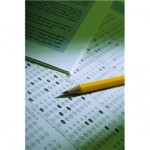 Parents concerned about their teen’s middle and high school exam and test prep might consider that studying isn’t just a matter of reviewing notes and study guides. Successful testing requires ongoing learning.
Parents concerned about their teen’s middle and high school exam and test prep might consider that studying isn’t just a matter of reviewing notes and study guides. Successful testing requires ongoing learning.
Here are some strategies for parents to empower their student’s exam prep and overall academic success.
In our series on Successful Assessment: how to prepare for a test (or why doesn’t my child test well?), we are reviewing the essential parts of successful testing:
- No Surprises (identified teacher expectations)
- Student Prepared (successful learning)
- Student had time to finish (successful test execution)
This post regards student preparation. It’s one thing to know what will be on a test (see Part 1: Identifying Expectations) and also to understand it . But can you perform it yourself?
That’s what a test is supposed to measure: doing it on your own.
Student Preparation
We often hear that the student “gets it” when the teacher or a tutor shows the lessons. But that’s not necessarily learning. As discussed in Guided v. Independent Practice, students do not fully learn until they can do it themselves.
Homework, classwork, quizzes and tests are all forms of “independent” practice whereby the student engages a topic on his or her own. (In my classroom, each student had a mini-whiteboard on which they were to practice independently the concepts I was showing them.)
“Guided practice” is the first step in learning. Between classroom lessons and discussions, homework and quiz review, “guided practice” is the link between student and teacher.
A test is the final piece of the process of learning, serving as a final marker for student outcomes, i.e., did the student learn the material and can demonstrate that content mastery independently?
“Independent Practice” means doing
If student preparation is simply “review” or watching YouTube videos, that does not constitute “independent practice” — it’s “guided practice,” in which the lessons are recorded or shown.
For example, research shows that when students take hand-written notes over typed notes, they retain more information. This is obvious to me, as students who write lecture notes verbatim are not learning. Learning requires processing, not mimicking. I learned this as a teacher because my handwriting is terrible and I realized that the kids learned better when trying to decipher my handwriting than when merely copying down clearly written notes.
It is by doing the work that we truly engage learning. For vocabulary, that might mean creating flashcards and sentence construction using the words. In math, that would be engaging new problems using the similar concepts. In history that would be drawing maps and placing events on a timeline from memory.
If you can’t teach it, you don’t know it
The best way to tell if your child is ready for a test is to ask him or her to explain it to you. If your child can’t tell you about the topic, your child did not learn it (aka “independent practice”).
A good test inverts the student to be teacher and checks if the student knows the topic well enough to teach it back to the teacher.
Cramming is not learning
Learning happens over time. While cramming may support short-term memory, it does not build the deeper and complex memory connections that constitute real learning and knowledge.
We want our students to be learning well ahead of a test, starting with the first classroom discussion of a topic, to the homework assignment that night, on through to the test. Students who don’t already know the material the day before the test have not engaged the learning necessary to succeed and are unlikely to perform well on the test the next day.
Keep a list of questions
I found that the most engaged students in my classes were those who asked what we call “higher order” questions day to day and in our workflow.
The idea here is that if you can not ask a question about a topic, then you don’t know anything about it. The more probing the question the higher the level of understanding. We want students to move from “what” and “who” questions to “how” and “why.”
As students sit in class and process their teacher’s lessons (“guided practice”), if they are not questioning the material they are not learning. Questions are how we sort information: “Okay, I get this, but what about that?”
Our recommendation to students is to log their questions day to day and review them prior to the exam to make sure these questions have been clarified. In my classroom, I collected student questions every day and used some of them on our tests, as student questions always guided me on what was and was not working for our lessons.
Take the test in advance
Human memory operates by association. That’s why we remember things better when we are in a similar circumstance. If a student learned something in a quiet room sitting at a desk, then the memory recall will not be as immediate while listening to loud music or jumping between texts with friends.
The more a student practices the testing situation in advance of the test, the higher results that student will find on the test.
Early human societies understood this, which is why they developed “rituals” prior to dangerous or risky events such as a hunt or warfare. Dances, rituals, and “pre-enactments” that mimicking the hunt or battle helped the actors anticipate and prepare for the real and dangerous situations they would later face. The modern military does the same thing, practicing the worst case scenarios in safe, controlled situations so that the soldiers will know what to do if the worst case scenarios occur.
Students can do the same: if your test is a timed essay, practice writing essays by the clock — and in a quiet room without cell phone distractions and sitting upright at a desk. The idea is not to let the actual test to be the first time the student has faced those ideas in that situation.
A Successful Assessment means targeted preparation (identify teacher expectations, prepare for them) and, as we will discuss next, and execution on test day, which we will discuss in the next post.
– Michael
